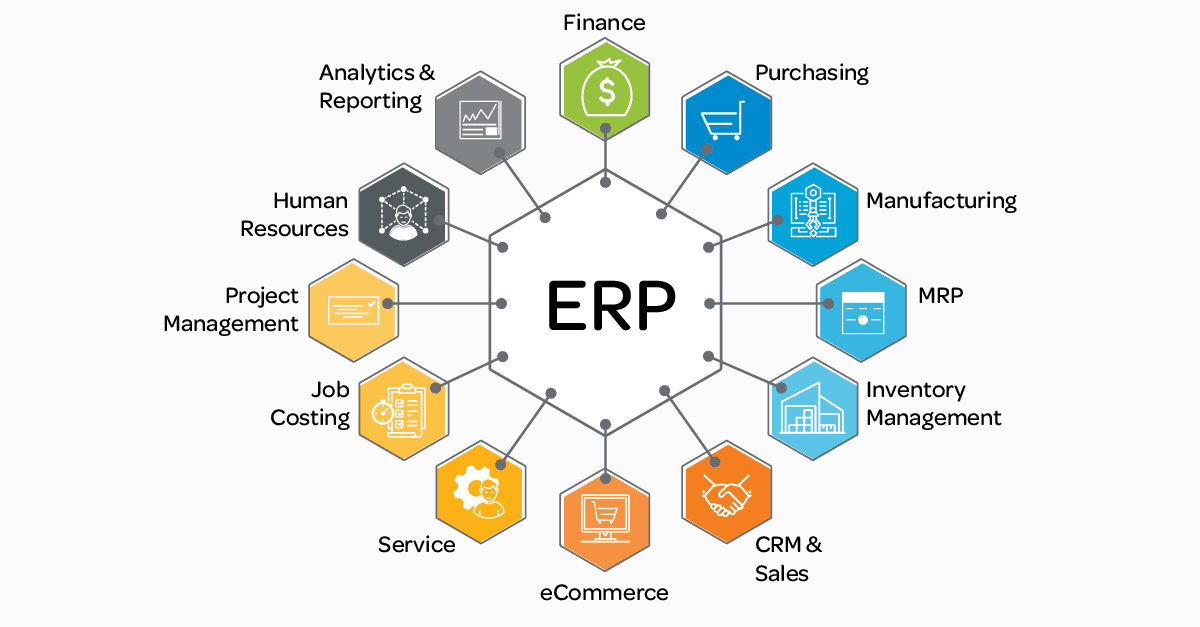Understanding ERP ID
Understanding ERP ID
Welcome to our guide on understanding ERP ID! If you’re new to the world of enterprise resource planning (ERP) systems, you might be wondering what exactly ERP ID is and why it’s important. In this article, we’ll break down everything you need to know about ERP ID, including its significance, how it’s used, and why it’s essential for businesses of all sizes. By the end of this piece, you’ll have a clear understanding of ERP ID and how it can benefit your organization.
What is an ERP ID?
An ERP ID, also known as Enterprise Resource Planning Identification, is a unique identifier assigned to users within an ERP system. It serves as a means of distinguishing individual users within the system and helps streamline processes by providing a standardized way to access and manage information.
ERP IDs are typically created during the onboarding process when a new user is added to the ERP system. They can be alphanumeric combinations or a combination of letters and numbers that are unique to each user. This ensures that no two users have the same ID, preventing confusion and ensuring accurate tracking of user activity within the system.
Having an ERP ID is crucial for accessing and utilizing the various features of an ERP system. It allows users to log in securely, access specific modules or functions based on their role within the organization, and track their activities for reporting and auditing purposes. Additionally, an ERP ID can help administrators troubleshoot issues, manage user permissions, and ensure compliance with security protocols.
One of the key benefits of an ERP ID is its ability to centralize user information and streamline communication within an organization. By having a unique identifier for each user, employees can easily collaborate, share information, and work on projects collectively within the ERP system. This promotes efficiency, accountability, and transparency across departments and functions.
Furthermore, an ERP ID can be customized to reflect a user’s role, department, or any other relevant information within the organization. This makes it easier for colleagues to identify and connect with each other, especially in large organizations where individuals may not interact frequently. It also helps in organizing and segmenting user data for reporting and analysis purposes.
In conclusion, an ERP ID plays a crucial role in facilitating user management, security, and collaboration within an ERP system. By providing a unique identifier for each user, it enhances efficiency, accountability, and communication across the organization. Whether you’re an employee accessing critical data or an administrator managing user permissions, having an ERP ID is essential for maximizing the benefits of an ERP system.
Importance of an ERP ID
ERP ID, or Enterprise Resource Planning Identification, plays a crucial role in the efficient functioning of businesses. It serves as a unique identifier that helps keep track of various resources and information within an organization. Without an ERP ID, businesses may struggle to effectively manage their operations and streamline their processes. From inventory management to customer relationship management, having a centralized system like ERP ID can greatly enhance productivity and performance.
One of the key aspects of an ERP ID is its ability to provide real-time visibility into various aspects of a business. This includes tracking inventory levels, sales data, customer information, and more. By using a unique identifier for each resource or transaction, businesses can easily access and analyze this data to make informed decisions. For example, if a company is running low on a particular product, they can quickly identify the issue through their ERP ID system and take appropriate action to replenish their stock.
Furthermore, having an ERP ID can help improve communication and collaboration within an organization. With all employees using the same system and identifiers, it becomes easier to share information, assign tasks, and work together towards common goals. This can lead to increased efficiency, reduced errors, and better overall performance.
In addition, an ERP ID can enhance security measures within a company. By assigning unique identifiers to each user and transaction, businesses can track and monitor who has access to sensitive information. This can help prevent unauthorized access and ensure that data is kept safe and secure. In today’s digital age, where cybersecurity threats are on the rise, having a robust ERP ID system in place is essential for protecting sensitive business data.
Overall, the importance of an ERP ID cannot be understated. It is a critical component of modern businesses, helping them to streamline operations, improve communication, enhance security, and make more informed decisions. By implementing an effective ERP ID system, organizations can position themselves for success in today’s competitive market.
How to generate an ERP ID
Generating an ERP ID is a crucial step in the implementation of an Enterprise Resource Planning system. This unique identifier is used to track and manage various aspects of the ERP system, such as users, transactions, and modules. There are several methods to generate an ERP ID, each with its own benefits and considerations.
One common method to generate an ERP ID is to use a combination of letters and numbers based on specific criteria. For example, the ID may start with a letter representing the department or division using the ERP system, followed by a series of numbers indicating the specific user or transaction. This method helps to organize and differentiate between different users or modules within the system.
Another approach to generating an ERP ID is to use a random alphanumeric code. This method involves assigning a unique sequence of letters and numbers to each user or transaction in the system. While this method may seem less structured than the first approach, it can be useful for systems with a large number of users or transactions, as it reduces the likelihood of duplicate IDs.
Furthermore, some ERP systems offer automatic ID generation features that assign a unique identifier to each user or transaction as it is entered into the system. This method eliminates the need for manual ID assignment and ensures that each ID is truly unique. Automatic ID generation can streamline the implementation process and reduce the risk of human error.
Regardless of the method chosen, it is important to ensure that the generated ERP IDs are secure and confidential. This means implementing proper access controls and encryption measures to protect sensitive information within the system. Additionally, regular audits and reviews should be conducted to identify any potential security vulnerabilities and address them promptly.
In conclusion, generating an ERP ID is a fundamental step in setting up an ERP system. By choosing an appropriate method and ensuring the security of the generated IDs, organizations can effectively track and manage their ERP processes. Whether using a structured combination of letters and numbers, a random alphanumeric code, or an automatic generation feature, the key is to create unique and secure identifiers that support the efficient operation of the ERP system.
Best practices for managing an ERP ID
Enterprise Resource Planning (ERP) systems are crucial for streamlining business processes and improving efficiency. An ERP ID is a unique identifier assigned to each user within the system, allowing them to access specific data and perform certain tasks. Managing ERP IDs effectively is essential for maintaining security and ensuring smooth operations. Here are some best practices for managing an ERP ID:
1. Create a detailed access control policy: One of the first steps in managing ERP IDs is to establish a clear access control policy. This policy should outline who has access to what information within the system, as well as the procedures for requesting and granting access. By defining roles and responsibilities, you can prevent unauthorized users from accessing sensitive data and reduce the risk of security breaches.
2. Implement strong authentication measures: Enhancing the security of ERP IDs requires implementing strong authentication measures. This may include using multi-factor authentication, requiring complex passwords, and regularly updating access credentials. By enforcing strict password policies and periodically changing access codes, you can reduce the likelihood of unauthorized access to the system.
3. Regularly audit ERP IDs: Conducting regular audits of ERP IDs is essential for identifying and addressing security vulnerabilities. By reviewing user permissions, activity logs, and access controls, you can detect any anomalies or suspicious behavior that may indicate a security breach. Auditing ERP IDs allows you to proactively manage risks and ensure compliance with data protection regulations.
4. Provide ongoing training and support: To effectively manage ERP IDs, it is important to provide ongoing training and support for users. This may include educating employees on security best practices, teaching them how to securely access and use the system, and offering technical assistance when needed. By investing in training programs and resources, you can empower users to make informed decisions and reduce the likelihood of errors or security incidents.
How an ERP ID helps streamline business operations
ERP ID plays a crucial role in streamlining business operations by providing a unique identifier for each transaction or piece of information within an ERP system. This unique identification number helps maintain consistency and accuracy in the data stored in the system, making it easier to track and manage various business processes.
One way an ERP ID helps streamline business operations is by providing a centralized platform for accessing and managing all relevant data. With an ERP ID, employees can quickly retrieve information about specific transactions, customers, or products without having to search through multiple databases or systems. This can save time and improve efficiency in decision-making processes.
Furthermore, an ERP ID enables businesses to automate various processes, such as inventory management, order processing, and financial reporting. By using this unique identifier, businesses can set up rules and workflows that trigger specific actions based on the data associated with the ERP ID. This automation not only reduces the risk of human errors but also speeds up the overall operation of the business.
Another advantage of having an ERP ID is the ability to integrate data from multiple departments and systems within the organization. This integration allows for better collaboration among different teams and ensures that everyone has access to the most up-to-date information. For example, a sales team can use the ERP ID to track customer orders and pricing information, while the production team can use the same ID to monitor inventory levels and production schedules.
Additionally, an ERP ID facilitates better communication and transparency within the organization. With a common identifier for all data, employees can easily share information across departments and teams, leading to improved decision-making and coordination. This also helps in identifying any bottlenecks or issues in the business process and allows for quick resolution.
Moreover, an ERP ID provides a comprehensive view of the entire business operations, allowing managers to analyze performance metrics, identify trends, and make informed decisions. By tracking each transaction or data point with a unique identifier, businesses can generate detailed reports and insights that help in optimizing processes and maximizing profitability.






